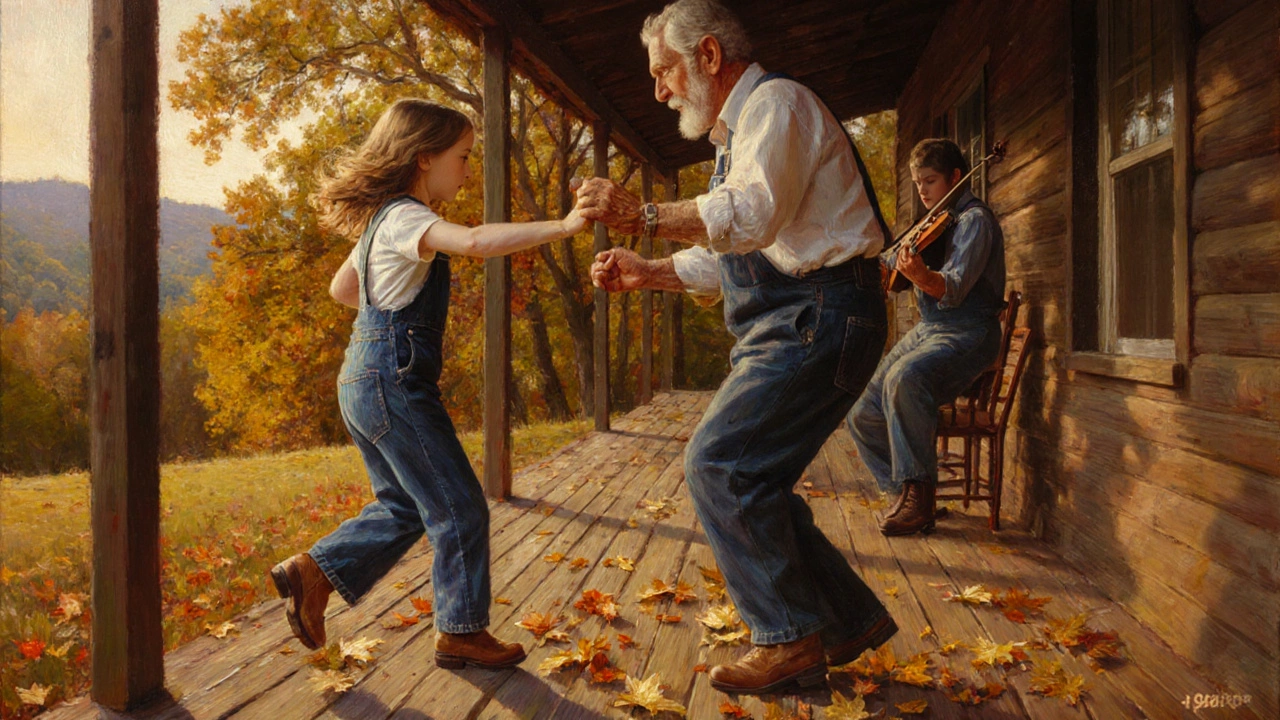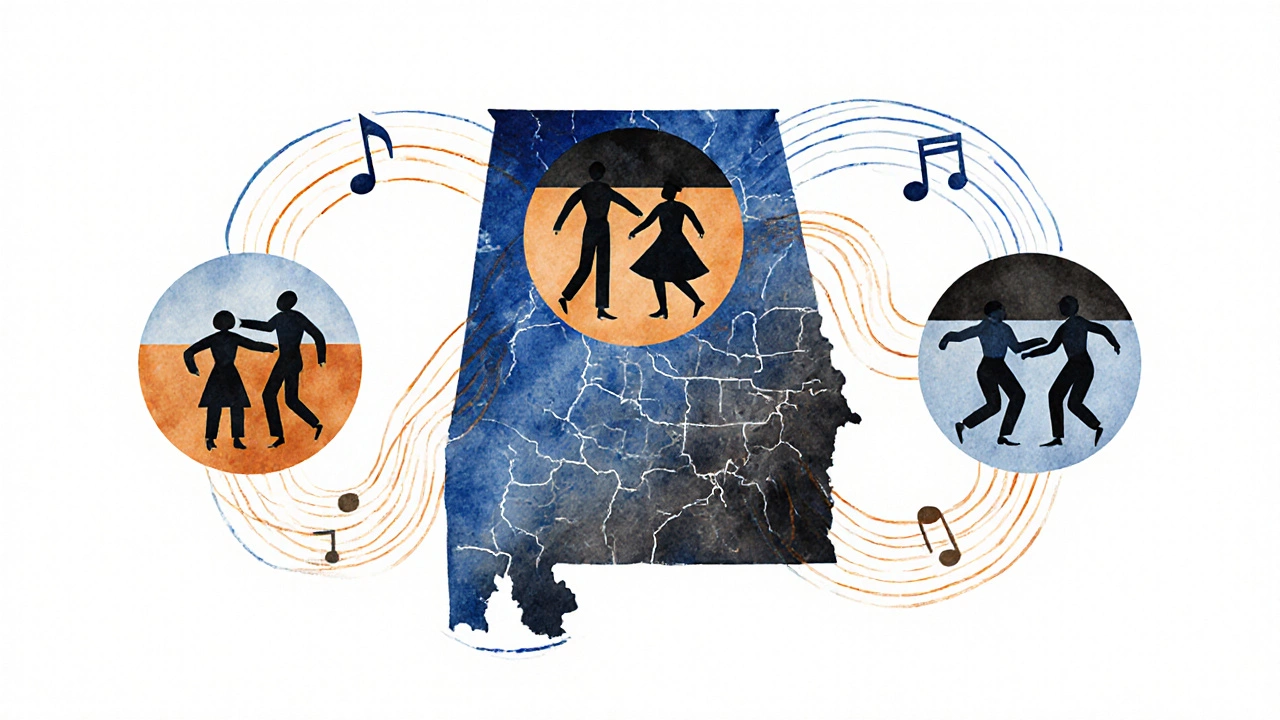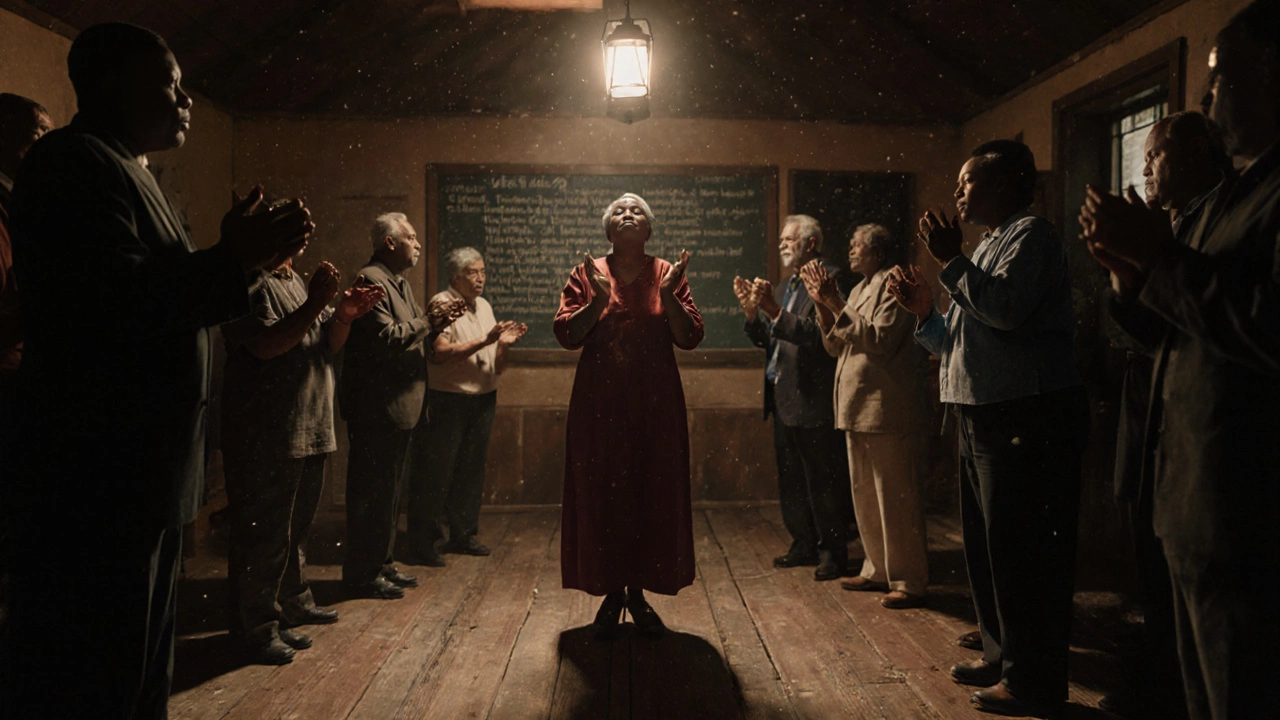Alabama Dance Styles Comparison Tool
Explore Alabama's Living Dance Traditions
Compare the key characteristics of Alabama's most significant folk dance forms developed over centuries in Black and white communities.
Ring Shout
West African roots
Flatfooting
Appalachian influence
Square Dancing
European roots
Boogie & Shuffle
Juke joint origin
Select a Dance Form
Select a dance form to view details
Select a dance form to view details
Select a dance form to view details
Select a dance form to view details
Alabama doesn’t have one single dance called "Alabama dance." That’s the first thing to understand. If you’re searching for a specific style named after the state, you won’t find it on a map or in a textbook. But if you’re looking for the real story - the living, breathing movement that comes from Alabama’s people, history, and communities - then you’re looking at something much richer.
Roots in the Soil: How Alabama’s Dances Grew
Alabama’s dance traditions didn’t come from a studio or a choreographer’s notebook. They grew from the fields, churches, juke joints, and family gatherings of Black and white communities across the state. After slavery, African rhythms merged with European folk steps in places like Mobile, Montgomery, and the Black Belt region. What emerged weren’t formal styles, but local expressions - dances that told stories, marked celebrations, and helped people survive hard times.
One of the most widespread forms is the line dance. Not the flashy country line dances you see on TV, but the older, slower, foot-stomping versions passed down in rural churches and community centers. These dances often followed call-and-response songs, with steps that mirrored the rhythm of work songs and spirituals. In places like Talladega County, elders still teach kids how to step to the beat of an old fiddle or tambourine - no fancy shoes needed, just good boots and a steady heart.
What You’ll Actually See in Alabama Today
There’s no official "Alabama dance" registry. But if you go to the Alabama State Fair in Montgomery, or the annual Black Belt Folk Festival in Greensboro, you’ll find dancers moving in ways that haven’t changed much in 80 years. These include:
- Ring shout - a circular, shuffling dance with clapping and chanting, rooted in West African spiritual practices. It’s still performed in a few Baptist churches in the Wiregrass region.
- Flatfooting - a solo or couple dance with light foot taps and no fancy lifts. It’s common in the Appalachian foothills of northern Alabama, where it blends with Tennessee and Kentucky styles.
- Square dancing - not just a Texas thing. Alabama has its own set of calls and figures, passed through generations of rural families. In places like Decatur, square dance clubs still meet every Friday night.
- Boogie and shuffle - born in Black juke joints in the 1940s and 50s. Dancers moved to blues and R&B, using smooth glides and quick footwork. This evolved into today’s Alabama club dance scene.
These aren’t museum pieces. They’re alive. You’ll see teenagers in Huntsville learning flatfooting from their grandparents. You’ll hear a 70-year-old woman in Selma leading a ring shout at a church picnic. These dances aren’t performed for tourists. They’re performed because they still mean something.
Why No One Calls It "Alabama Dance"
There’s a reason you won’t find "Alabama dance" in dance history books. Unlike Indian classical forms like Bharatanatyam or Odissi - which have codified steps, costumes, and guru-lineages - Alabama’s traditions were never written down. They were kept by memory, passed through touch, sound, and repetition.
Also, Alabama’s dance culture was never homogenous. What happened in the cotton fields of Lowndes County was different from what happened in the coal towns of Jefferson County. Black communities developed their own steps. White communities had theirs. And over time, they borrowed from each other - quietly, without fanfare.
That’s why you can’t pin it to one name. It’s not one thing. It’s many things, stitched together by rhythm, resilience, and community.

Where to Experience Alabama’s Dance Traditions
If you want to see these dances in action, you have to go where they live:
- Alabama Folklife Association - hosts annual festivals in Tuscaloosa and Mobile. They record elders teaching dances and offer free workshops.
- Alabama State Council on the Arts - funds local dance groups that preserve traditional steps. Check their website for upcoming events.
- Church socials in the Black Belt - especially in Macon, Bullock, and Perry counties. Ask politely - many are open to visitors who show respect.
- University of Alabama’s Center for the Study of Southern Culture - has archived footage of ring shouts and flatfooting from the 1970s.
Don’t expect a stage show. These aren’t performances for applause. They’re acts of remembrance.
Common Misconceptions
People often assume Alabama dance means country line dancing. That’s a modern, commercialized version that started in the 1980s and spread nationwide. It has almost nothing to do with the older traditions.
Another myth? That these dances died out. They didn’t. They just moved underground. A 2023 survey by the Alabama Folklife Association found over 40 active groups still practicing traditional steps - mostly among people over 50, but with a growing number of teens and young adults joining.
And yes, some of these dances are being taught in public schools now - not as "history," but as living culture. In Birmingham, elementary schools have added "Southern Folk Steps" to their physical education curriculum.

What Makes These Dances Unique
What sets Alabama’s dance traditions apart isn’t the steps. It’s the meaning behind them.
Ring shouts weren’t just dances - they were prayers. Flatfooting wasn’t just movement - it was a way to stay grounded when everything else was falling apart. Line dances brought people together when segregation kept them apart.
There’s no costume. No fixed rhythm. No national organization. No TV show. Just people, moving together because they have to - because it’s how they remember who they are.
That’s Alabama dance. Not a style. A story.
Is there a dance officially called "Alabama dance"?
No, there is no single dance officially named "Alabama dance." The term doesn’t refer to one specific style, but to a collection of regional folk dances that developed in Alabama over centuries - including ring shouts, flatfooting, square dancing, and traditional line dances. These forms are passed down orally and through community practice, not codified in textbooks or dance academies.
Are Alabama dances related to country line dancing?
Not really. Modern country line dancing became popular in the 1980s and is choreographed for commercial venues. Alabama’s traditional dances - like ring shouts and flatfooting - are improvised, community-based, and rooted in African and Appalachian folk traditions. They’re slower, more rhythmic, and tied to spiritual or social gatherings, not dance clubs or TV shows.
Can I learn Alabama folk dances as a beginner?
Yes. Organizations like the Alabama Folklife Association offer free workshops in cities like Tuscaloosa, Mobile, and Montgomery. Many events are open to the public, and instructors often teach by ear and example - no prior experience needed. The key is showing up with respect and an open mind.
Are these dances still performed today?
Absolutely. Over 40 active groups across Alabama still practice traditional dances, especially in rural areas. Many are led by elders, but younger generations are increasingly involved. You can see them at church socials, county fairs, and annual folk festivals like the Black Belt Folk Festival in Greensboro.
Why aren’t Alabama dances more widely known?
Because they were never meant for the spotlight. These dances were created by communities that were often ignored by mainstream culture - especially Black communities in the rural South. Without funding, media attention, or formal institutions to document them, they survived through quiet persistence. Only recently have efforts begun to preserve them - and even now, they remain largely unknown outside the state.
What’s Next for Alabama’s Dance Traditions
There’s a quiet revival happening. High school students in Birmingham are filming elders teaching ring shouts. College students in Tuscaloosa are digitizing old audio recordings. Local artists are blending traditional steps with modern music.
It’s not about turning these dances into a spectacle. It’s about keeping them alive - one step, one song, one gathering at a time.
